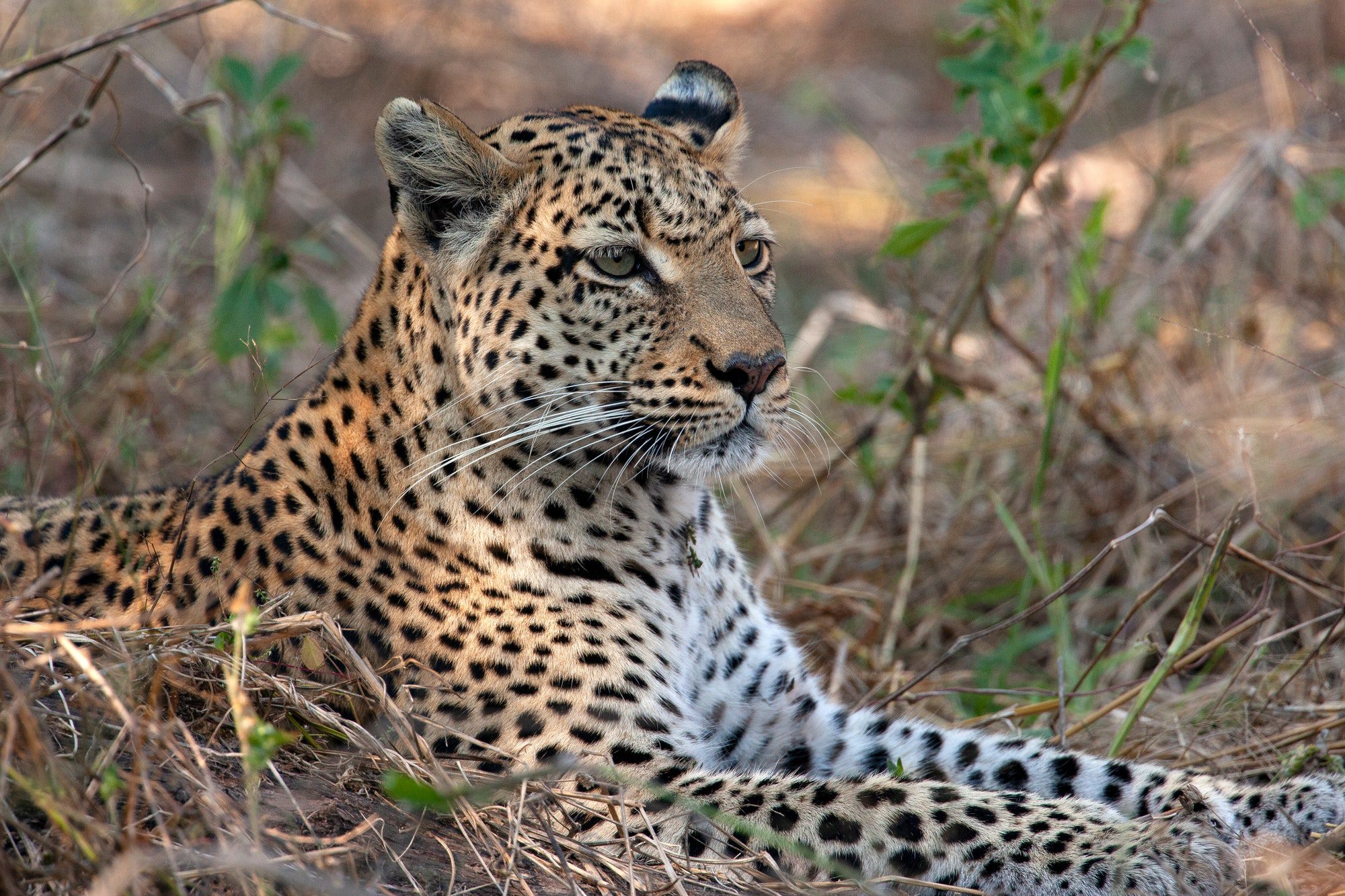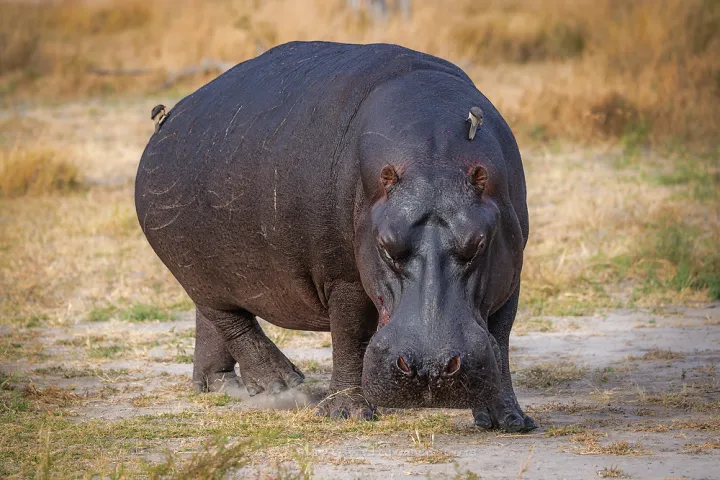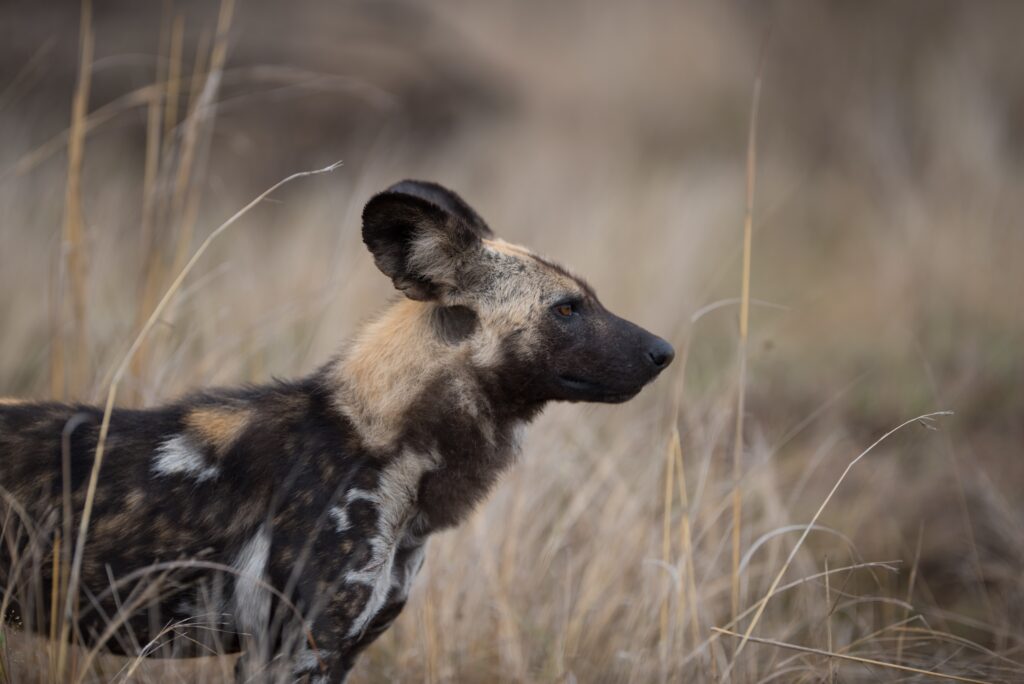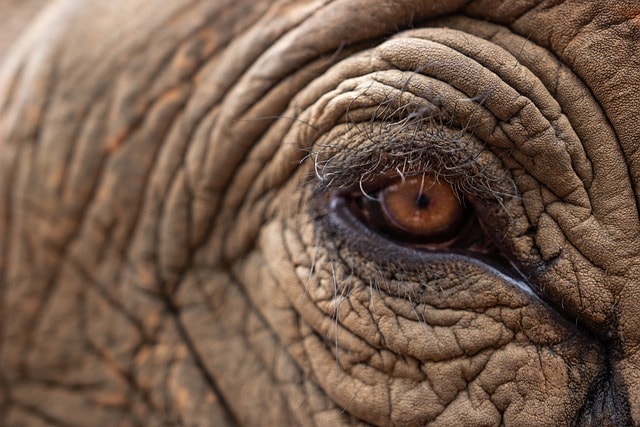The African leopard (Panthera pardus pardus) is one of the most fascinating and adaptable big cats in the wild. Renowned for its elusive nature and remarkable ability to thrive in diverse habitats across sub-Saharan Africa, this majestic predator plays a crucial role in maintaining ecological balance. From dense tropical forests to arid savannahs, the African leopard’s presence is a testament to its resilience and stealth.
This blog explores the behavior, habitat, and conservation challenges of the African leopard, shedding light on its natural history, ecological importance, and the ongoing efforts to protect this vulnerable species.
Whether you are a wildlife enthusiast, conservationist, or simply curious about big cats, this comprehensive guide offers valuable insights into the life of one of Africa’s most iconic wild cats.
Introduction to Big Cats
Wild cats, particularly the African leopard (Panthera pardus pardus), are among the most elusive and adaptable big cats found across the African continent. As part of the Felidae family, there is remarkable diversity among cat species, including wild cats such as leopards, lions, jaguars, and cheetahs, each with unique physical characteristics, habitats, and ecological roles.
These majestic predators inhabit a wide range of environments, from the dense tropical forests of Central Africa to the arid savannahs and mountainous regions of southern and west Africa, extending into parts of the Middle East. As a member of the Felidae family, the African leopard is a key species within the big cats group, which also includes lions, tigers, and jaguars. The mountain lion, another large solitary predator, is native to the Americas and occupies a different ecological niche. Panthera tigris, the tiger, is another prominent member of the Panthera genus.
Among Asian leopard subspecies, the Amur leopard (Panthera pardus orientalis) stands out as a rare and endangered subspecies. The African leopard is the only species of big cat widely distributed across Africa. In contrast, the only cat species domesticated by humans is the domestic cat, which differs significantly from wild cats like the African leopard. The clouded leopard, a distinct wild feline found in Southeast Asia and the islands of Sumatra and Borneo, is notable for its unique adaptations and ecological niche.
The African leopard is renowned for its solitary nature, stealth, and incredible adaptability. Like most cats, it exhibits behaviors and adaptations such as territoriality, nocturnal hunting, and acute senses. Male and female leopards only come together briefly during the breeding season, after which the female raises her cubs alone in secluded dens, often hidden within thick vegetation to protect them from predators and environmental hazards.
These big cats play a crucial ecological role by maintaining the balance of their ecosystems through controlling prey populations and competing with other carnivores. When it comes to physical characteristics, leopards display significant coat colour variation, ranging from pale yellow to deep gold or black, often with distinctive rosette patterns that aid in camouflage across different habitats.
Leopard Habitat and Distribution
African leopards are distributed widely across sub-Saharan Africa, thriving in a variety of habitats but generally avoiding extremely sandy deserts where prey is scarce. Their habitat includes tropical forests, savannahs, grasslands, montane regions, and even semi-desert areas. Leopards occur in a wide range of environments across Africa, demonstrating their adaptability and presence in diverse ecosystems.
Notably, significant populations are found in protected reserves such as South Africa’s Kruger National Park, where conservation efforts have helped sustain viable leopard populations. Recent research on South African leopards has focused on their genetic diversity, evolutionary history, and conservation challenges. Leopards also occur in east Africa, where they inhabit mountainous and savanna regions, and in south Africa, with regional differences in habitat and threats.
However, habitat fragmentation and loss pose significant threats to leopard populations, especially in east and southern Africa. Expanding human settlements, agriculture, and infrastructure development have led to the degradation and division of leopard habitats, reducing the available space and prey species necessary for their survival. Leopards occur in both east Africa and south Africa, with regional variations in habitat preferences and threats faced by these populations.
Leopard density has been observed to decline outside protected areas, emphasizing the urgent need for targeted conservation measures.
The African leopard’s range extends from west Africa through central Africa and into the Middle East, with several subspecies adapted to different regions. Their presence in east Africa is notable for regional variations in size, behavior, and habitat preferences.
Asian leopard subspecies, such as Panthera pardus delacouri found in Southeast Asia, share some characteristics but differ in habitat preferences and physical traits. This broad distribution highlights the leopard’s remarkable ecological versatility.
Behavior and Social Structure
Leopards are predominantly nocturnal hunters, using their agility, stealth, and powerful build to stalk and ambush prey. Sexual dimorphism is evident, with the male leopard being larger, males weighing up to 90 kilograms, while females are generally smaller. Black leopards, a color morph with a dark coat, are found in some African regions.
These cats are exceptional climbers, often dragging their prey up into trees to avoid scavengers such as hyenas and lions. Their coat colour varies widely, ranging from pale yellow to dark golden, or even black, with distinctive black rosettes and spots that provide excellent camouflage against the varied backgrounds of their habitats.
Female leopards typically give birth to litters of two to four cubs after a gestation period of approximately 90 to 106 days. Cubs are born blind and helpless, relying entirely on their mother’s care.
They remain in the den, often hidden in thick vegetation, for several weeks before beginning to accompany their mother on hunts. Cubs reach independence between 10 and 18 months of age. Males tend to disperse farther from their natal territories than females, which may stay closer to their birthplace.
Leopards have a broad diet that includes both large herbivores and small mammals. They are capable of hunting large prey, often targeting animals weighing between 10 and 40 kg, which influences their hunting strategies and feeding behavior. Their prey ranges from impalas and duikers to rodents and birds, demonstrating their adaptability to different prey availability.
Despite being solitary animals, leopards exhibit complex communication behaviors, including vocalizations like rasping coughs to mark territory and chuffing sounds used by females to communicate with their cubs. In some African cultures, leopard skins and claws have traditional significance and are used in rituals and ceremonies.
Ecology and Role in the Ecosystem
African leopards are a cornerstone of the ecosystems they inhabit, serving as apex predators that help regulate the populations of their prey species. By controlling numbers of small mammals, birds, and other prey, leopards maintain a delicate balance within sub-Saharan Africa’s diverse habitats, from the tropical forests of west Africa to the grasslands and riverine areas of southern Africa. This top-down regulation prevents overgrazing and supports the health of vegetation, which in turn benefits countless other animal species.
In regions like Kruger National Park, leopard density is closely tied to the abundance of prey and the availability of dense cover. Female leopards play a particularly vital role in ecosystem stability, not only by hunting a wide range of prey but also by raising and teaching leopard cubs the skills they need to survive. The presence of healthy female leopards ensures that future generations can continue to fulfill their ecological role.
Male leopards, often larger and more wide-ranging, are essential for maintaining genetic diversity within leopard populations. Their movement across territories and mating with multiple females help to strengthen the resilience of the species. However, the loss of male leopards due to poaching or conflict can threaten the genetic health of local populations, making conservation efforts even more critical.
The demand for leopard skins, particularly in parts of Asia, has placed additional pressure on both African leopards and Asian leopard subspecies. Illegal hunting and habitat loss have led to significant declines in leopard populations, with some subspecies now critically endangered. In west Africa, leopards are increasingly rare due to habitat fragmentation and human encroachment, while in east and southern Africa, ongoing conservation efforts are vital to counteract the effects of poaching and habitat degradation.
Research tools such as camera traps have become invaluable for monitoring wild leopards, assessing leopard density, and understanding their behavior in different environments. These studies inform targeted conservation strategies and help identify priority areas for protection.
Ultimately, the survival of leopards panthera pardus is closely linked to the health of their ecosystems. Conservation efforts that protect leopard habitat, engage local communities, and support ongoing research are essential for ensuring that these solitary animals continue to thrive across Africa. By safeguarding leopard populations, we also preserve the intricate web of life that depends on their presence.
Best Places to Spot the African Leopard in Botswana
Botswana is renowned for its rich wildlife and pristine natural habitats, making it one of the best destinations to observe the elusive African leopard in the wild. The country’s diverse ecosystems provide excellent opportunities for leopard sightings, particularly in the following key locations:
Okavango Delta
The Okavango Delta, a vast inland delta and UNESCO World Heritage Site, is one of the prime habitats for African leopards in Botswana. Its mosaic of waterways, floodplains, and woodlands supports a healthy prey base, attracting leopards that use the dense vegetation for stalking. Guided safaris and boat excursions in this area increase the chances of spotting these stealthy cats.
Chobe National Park
Known for its large elephant herds, Chobe National Park also offers excellent leopard viewing opportunities, especially in the park’s wooded areas and along the Chobe River. Leopards here benefit from abundant prey and the park’s protected status, making it a popular spot for wildlife enthusiasts.
Moremi Game Reserve
Located within the Okavango Delta, Moremi Game Reserve combines floodplains, forests, and savannahs, creating diverse habitats ideal for leopards. The reserve is known for its relatively high leopard density, and visitors often encounter these big cats during game drives.
Central Kalahari Game Reserve
Though more arid, the Central Kalahari Game Reserve is home to leopards adapted to drier conditions. Leopards here are elusive but present, with their broad head and brown skin blending into the Kalahari’s sandy and scrubby environment.
Khwai Concession
Adjacent to the Okavango Delta, the Khwai Concession is another excellent area to spot African leopards. This region features a mix of woodland and floodplain habitats, supporting a rich diversity of prey species. Leopards in Khwai are known for their elusive behavior, but guided safaris increase the chances of sightings in this relatively less crowded area.
When planning a leopard-spotting trip to Botswana, it is best to visit during the dry season (May to October), when animals congregate around water sources, making sightings more predictable. Engaging experienced local guides who understand leopard behavior and habitats can greatly enhance the chances of a successful sighting.
Botswana’s commitment to animal conservation and sustainable tourism helps protect leopard habitats, ensuring that future generations can continue to experience the thrill of encountering these magnificent wild cats in their natural environment.
Threats and Conservation
The African leopard faces numerous threats that have contributed to population declines across much of its range. Habitat loss and fragmentation due to human activities reduce the space available for these cats and disrupt their prey base. Prey depletion, caused by overhunting and habitat loss, is a significant threat to leopard populations, as reduced prey availability directly impacts their survival and ecological role.
Trophy hunting and illegal poaching for leopard skins and body parts further endanger populations, especially in regions like west and north Africa where leopards are already rare.
Human-wildlife conflict is a significant issue, particularly in areas where expanding human populations overlap with leopard habitats.
Leopards may prey on livestock, leading to retaliatory killings by farmers and herders. Effective conservation strategies must therefore include conflict mitigation measures, community engagement, and education programs to foster coexistence.
The African leopard’s conservation status is currently listed as vulnerable by the International Union for Conservation of Nature (IUCN), reflecting its risk of extinction due to ongoing threats.
Conservation efforts focus on protecting leopard habitats, maintaining prey populations, and enforcing anti-poaching laws. Biological conservation tools such as camera traps and prey availability studies are essential for monitoring leopard populations and informing management decisions.
Leopard Research and Protection
Ongoing research has greatly enhanced our understanding of African leopard ecology, behavior, and conservation needs.
Camera trapping and GPS collaring have provided valuable data on leopard movement patterns, population densities, and interactions with other species. These insights help conservationists develop targeted strategies to protect leopards and their habitats.
Collaboration between scientists, conservation organizations, governments, and local communities is critical to the success of conservation programs.
Community-based initiatives that involve local people in monitoring and protecting leopards have shown promise in reducing human-leopard conflict and promoting sustainable coexistence.
Continued research and protection efforts are vital to ensure the long-term survival of African leopards and other wild cats. Preserving these apex predators is not only crucial for maintaining ecosystem balance but also for supporting biodiversity and the health of natural environments across Africa and beyond.
Summary
The African leopard (Panthera pardus pardus) is a remarkable and adaptable big cat found across sub-Saharan Africa. Known for its stealth, solitary nature, and ability to thrive in diverse habitats from tropical forests to arid savannahs this elusive predator plays a vital role in maintaining ecological balance.
Despite facing threats such as habitat loss, prey depletion, poaching, and human-wildlife conflict, ongoing conservation efforts and research are helping to protect this vulnerable species.
Observing the African leopard in its natural environment offers a unique glimpse into the wild and underscores the importance of preserving these magnificent animals for future generations.
Experience the African Leopard with Khwai Expeditions Camp
For wildlife enthusiasts eager to witness the elusive African leopard in the wild, Khwai Expeditions Camp in Botswana offers an unparalleled safari experience. Nestled near the Okavango Delta, Khwai provides expert-guided tours through diverse habitats where leopards are known to roam.
With its commitment to sustainable tourism and conservation, Khwai Expeditions Camp not only offers thrilling leopard sightings but also supports the protection of these majestic big cats and their ecosystems.
Book your stay at Khwai Expeditions Camp today and embark on an unforgettable adventure to encounter the African leopard in its natural habitat. Witness the stealth, power, and beauty of one of Africa’s most iconic wild cats while contributing to vital conservation efforts.
Frequently Asked Questions (FAQ) about African Leopards
What is the African leopard?
The African leopard (Panthera pardus pardus) is a subspecies of leopard native to sub-Saharan Africa. It is a solitary big cat known for its adaptability to diverse habitats, from tropical forests to savannahs.
Where do African leopards live?
African leopards inhabit a wide range of environments across sub-Saharan Africa, including tropical forests, grasslands, savannahs, mountainous areas, and semi-deserts. They avoid extremely sandy deserts due to scarce prey.
What do African leopards eat?
Their diet is broad, including medium-sized herbivores such as impalas and duikers, as well as small mammals, birds, and occasionally larger prey. They are opportunistic hunters and adapt their diet based on prey availability.
How do African leopards raise their cubs?
Female leopards raise their cubs alone in secluded dens, often hidden in thick vegetation. Cubs are born blind and helpless and remain dependent on their mother for up to 18 months before gaining independence.
What are the main threats to African leopards?
The primary threats include habitat loss and fragmentation, prey depletion, illegal poaching for skins and body parts, trophy hunting, and human-wildlife conflict, especially retaliatory killings due to livestock predation.
Are African leopards endangered?
African leopards are currently listed as vulnerable by the IUCN due to declining populations caused by ongoing threats, though their status can vary regionally.
How do conservation efforts help African leopards?
Conservation focuses on habitat protection, anti-poaching enforcement, community engagement, conflict mitigation, and research through tools like camera traps and GPS tracking to monitor populations and inform management.
Do African leopards coexist with other big cats?
Yes, African leopards often share habitats with lions and hyenas. Their ability to climb trees helps them avoid competition and scavengers.
What is unique about African leopard coat color?
African leopards exhibit a wide range of coat colors from pale yellow to dark golden and black (black panthers), with distinctive black rosettes providing camouflage in different environments.
How important are African leopards to ecosystems?
As apex predators, African leopards regulate prey populations, maintain ecosystem balance, and support biodiversity across their habitats.





